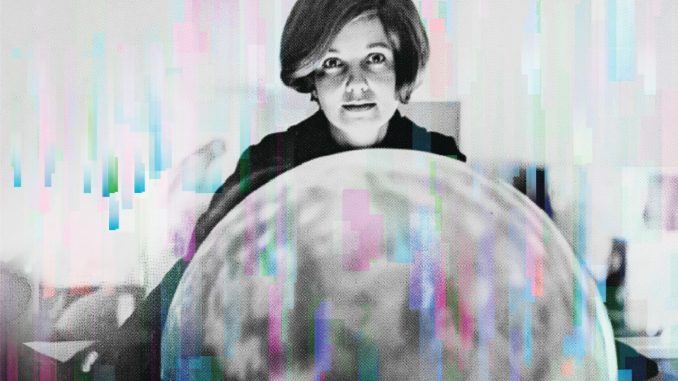
DEARBORN, Mich. — The Henry Ford will honor groundbreaking multimedia artist Lillian Schwartz with a new exhibition, Lillian Schwartz: Whirlwind of Creativity, is now open and continuing through January 1, 2024. Curated by Kristen Gallerneaux, The Henry Ford’s curator of communications and information technology, this exhibition will be comprised of more than 100 artifacts and will be hosted in Henry Ford Museum of American Innovation. This will also mark the debut of the new Collections Gallery, built specifically to host exhibitions of pieces from The Henry Ford’s own collections.
Best known for her experimental films, animation videos and computer-aided art analysis, Lillian Schwartz became an early adopter of computer-generated art in the mid-1960s. Born in 1927 in Cincinnati, her creativity was apparent at a young age, and she experimented with painting, drawing and sculpture before turning to technology to expand the scope of her work. In 1968, her kinetic sculpture “Proxima Centauri” was selected as part of The Museum of Modern Art’s (MoMA) “The Machine as Seen at the End of the Mechanical Age” exhibit. She then expanded her work into the computer arena, becoming one of the first resident artists at AT&T Bell Laboratories (1969-2002) and later acted as a consultant at AT&T, IBM and Lucent Technologies.
“It was rare for artists to receive access to the types of advanced computers that Lillian Schwartz used at Bell Laboratories in the 1960s and ’70s,” said Gallerneaux. “She worked at a time when artists were forced to defend computer art as legitimate while also actively trying to improve it. Lillian saw these machines as tools full of possibilities, and yet she always maintained a healthy sense of ‘technological ingratitude’ for their limitations—always seeking more. She was a trailblazing artist who combined digital and traditional mediums as she explored ways to bridge art, science and technology.”
In the 1970s, Schwartz began receiving honors for her films at a variety of animation and film festivals, including the Ann Arbor Film Festival, CINE, Cannes and the National Academy of Television Arts and Sciences. In 1984, she received an Emmy Award for her computer-generated public service announcement for MoMA. Most recently, her films were included in the 2022 Venice Biennale “Milk of Dreams” exhibit.
In 2021, The Henry Ford became the official home of Lillian Schwartz’s archive and collection, which contains more than 5,000 2D and 3D objects, including her artwork, personal papers and library, photographs, computing equipment, and more, spanning from her childhood into her late career.
The approximately 1,800-square-foot Collections Gallery will be split into three sections for the Schwartz exhibition, expounding on three core themes—the artist’s transition from childhood to adulthood; her explorations in bridging art, science and technology at Bell Laboratories; and her penchant to push the media she worked with to its limits. Visitors can expect to see her newly restored sculpture “Proxima Centauri,” which has not been on public exhibit in a museum for many years, along with rarely shown mixed-media works, studio equipment and large-scale projections of Schwartz’s films.
About The Henry Ford
Located in Dearborn, Michigan, The Henry Ford, a globally recognized destination, fosters inspiration in a hands-on learning environment. Its unparalleled collection, consisting of 26 million artifacts, is the most comprehensive of its kind, focusing on innovation, ingenuity and resourcefulness in America. This national historic landmark’s unique venues include Henry Ford Museum of American Innovation, Greenfield Village, Ford Rouge Factory Tour, Benson Ford Research Center and Henry Ford Academy, a public charter high school. Together with its online presence at thf.org, its national television series The Henry Ford’s Innovation Nation, its learning community inHub and its K-12 invention and entrepreneurship competitions through Invention Convention Worldwide, The Henry Ford’s purpose is to activate innovative mindsets and unlock individual potential to help shape a better future.
Source: The Henry Ford
